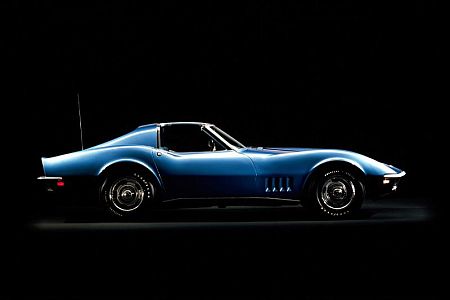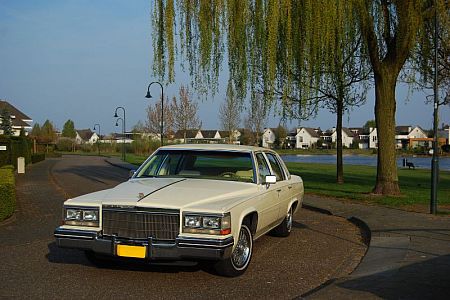Audi 100 and 200
Long before Audi counted itself among the top brands, it was already producing great cars with smart technology and many features that improve driving comfort. Take for example the Audi 100, which was produced between 1976 and 1982, and its more luxurious version, the Audi 200. These are spacious and comfortable cars that are often overlooked, but actually deserve more attention.
Youngtimers that deserve more attention
The Audi 100 and the more luxurious Audi 200 were produced between 1976 and 1982, respectively. From 1979, the second version appeared. Audi enthusiasts with an eye for the past still appreciate the 200, especially the turbo 5T version. Unfortunately, the Audi 100 leads a marginal existence these days.
This is partly due to this model's susceptibility to rust, which contrasts sharply with the effective corrosion protection Audi applied to its successors. Moreover, the austere and timeless design of both the exterior and interior may not be as inspiring as a classic design. The choice of the 100/200 is therefore not obvious, but that still makes these reliable and fun-to-drive cars interesting!

An extra cylinder
Despite the success of the previous generation Audi 100 C1, the company had limited resources to develop its successor. Engineers wanted to stick with front-wheel drive, but also wanted to find ways to make the car more prestigious and competitive. A six-cylinder engine did not fit the design, and developing a completely new V6 engine would be too expensive. Therefore, the new top official Ferdinand Piëch decided to apply a trick he had previously used at Mercedes-Benz: simply add an extra cylinder to the existing engine. This concept became the basis for Audi's approach that endured for decades.
Audi 100 Avant
Audi initially introduced the four-door sedan version of the Audi 100 Type 43, along with a less popular two-door variant. But in 1977 came a really interesting addition: the five-door Audi 100 Avant. However, it was not a traditional station wagon as we know it today, but a hatchback with a shorter rear section and a fold-down rear seat.

Various engines
As for the engines, several options were offered over the years. It started with the modest 1.6 and 2.0 four-cylinders. But the five-cylinder 2.1 litres were much more attractive, available with carburettor (5S) or injection (5E), later the 1.9 was also introduced. From 1978, you could also opt for a diesel variant, the slower but frugal and refined 5D. A facelift in 1980 brought few technical changes.
Audi 100 Formel E
A special mention deserves the Audi 100 Formel E, an economical variant that actually had a start-stop system on board. As standard, this version had a 4+E transmission, which was actually a five-speed gearbox with a very high gear ratio in top gear. This transmission was also available for other variants of the Audi 100, along with a three-speed automatic.
More luxurious versions
Customers looking for a more luxurious option than the regular models like the C, CL, L, LS, GLS and GLS could opt for the comfortable Audi 100 CD, with cushioned rear seats and cruise control. Or they could spend their money on the Audi 200, which was higher-end in all respects. The Audi 200 came exclusively with five-cylinder engines, the most powerful variant of which had a turbocharger. You could recognise an Audi 200 by its twin headlights and wider rear lights.

Strengths and weaknesses of the Audi 100/200
There are several positive aspects that speak for the Audi 100 and 200:
- A low weight;
- A premium build quality;
- Occupant comfort;
- A generous interior space, good all-round visibility;
- Comfortable seats;
- Comfortably tuned suspension;
- And they are generally quiet, especially with the smooth five-cylinder engines.
Don't expect distinctly sporty handling, however: at high speeds, the cars tend to understeer and the steering feels somewhat indirect. Power steering was available as an option for the Audi 100, while the Audi 200 had it as standard. In terms of reliability, the technology is generally reliable, with the exception of the automatic transmission. Experts strongly recommend choosing a manual. A major problem that can affect all Audi 100s and 200s of the type 43 is rust. It can strike mercilessly, even in the most unexpected places.

Availability and maintenance
When it comes to popularity, the Audi 100 and 200 are pretty far apart. The turbo model, the 5T, is considered the ultimate model and at the same time rare. With both models, the supply of good-looking examples is limited. As a result, they can fetch considerably more money, although prices never get really high, especially for the Audi 100.
In the German market, of course, there is the widest choice available. One issue that Audi does not do well is the availability of parts for the Type 43, which sometimes saddles owners with searches. This is something to keep in mind if you are considering a regular Audi 100 or 200. In general, though, wear parts are reasonably available.
It is good to know that fitting LPG will not damage the engines. Furthermore, these German sedans are known to be fairly easy cars to maintain, especially in the simpler versions. All in all, there are few reasons to overlook the Audi 100 and 200 when looking for a classic sedan or hatchback, and there are plenty of arguments to seriously consider buying one of these models.




